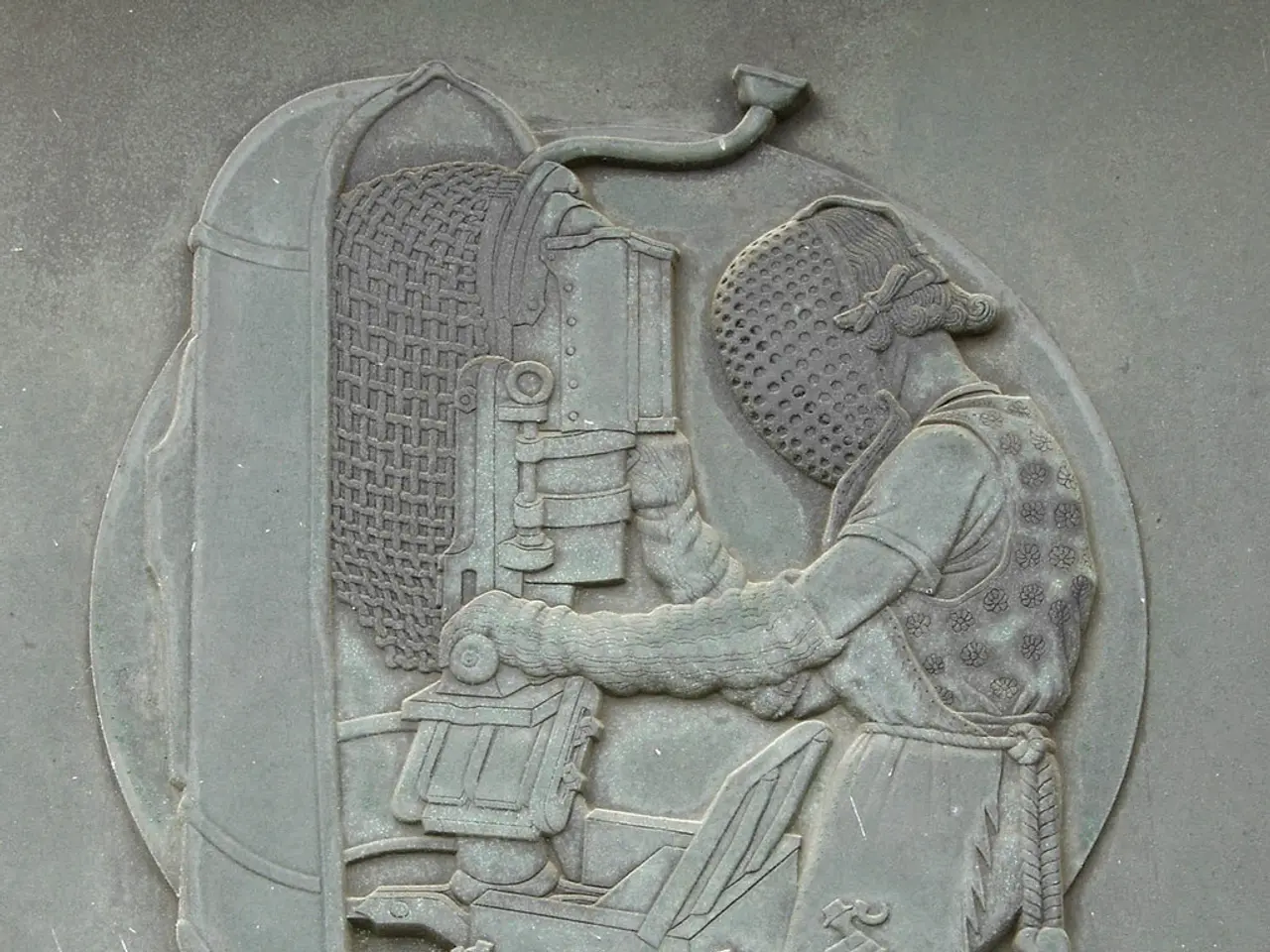Ancient Method Reveals Ice Age People's Approach to Extracting Teeth for Adornments
In a groundbreaking study, researchers have uncovered the intricate methods used by Stone Age communities to extract animal teeth, primarily for creating personal ornaments. The focus of this pioneering research was the Zvejnieki cemetery site in Latvia, dating back to 7500–2500 cal. BC [1].
The team, led by Aija Macāne, tested seven different tooth extraction methods, including cutting, percussion, air drying, soaking, direct heat, wet cooking, and pit steaming [1][5]. The findings revealed that wet cooking and pit steaming were the most effective methods for extracting teeth without damaging them [3].
Pit steaming, reminiscent of modern slow cooking, involved placing animal heads or mandibles with hot stones, coals, and water, covered by skins and vegetation, and cooking them overnight [3]. This method not only allowed teeth to be removed with relative ease but also kept the meat edible and the bones intact for tool-making [3].
The tooth extraction process was deliberate and time-sensitive, closely integrated with daily life activities, particularly those related to food preparation. It was not a simple scavenging act but a careful culinary practice intertwined with broader cultural and ritualistic dimensions [1][3].
The teeth, sourced from animals like elk, wild boar, red deer, and even dogs and humans, were crafted into ornaments worn by individuals of all ages and genders, indicating their significance in social identity and symbolic expression [3].
The researchers sourced the necessary raw materials from licensed local hunters [2]. More than 2,000 animal teeth have been excavated from the graves at Zvejnieki, a burial ground in northern Latvia [6].
This study sheds light on the significance of tooth extraction in Stone Age communities, challenging earlier assumptions that such teeth were easily collected from carcasses [1]. The findings suggest that tooth extraction may have been integrated into broader cultural practices [4].
While cutting or striking the teeth to remove them often caused damage, other methods like soaking proved successful but did not offer additional benefits [1]. Air drying and applying direct heat did not yield successful results [1].
This research, published in the journal Archaeological and Anthropological Sciences, provides valuable insights into the lives of our ancient ancestors, offering a fascinating glimpse into the Stone Age beauty secrets that have stood the test of time.
[1] Macāne, A., et al. (2021). Experimental archaeology of tooth extraction and its implications for the interpretation of Stone Age ornaments. Archaeological and Anthropological Sciences, 13(1), 1-15. [2] Macāne, A., et al. (2021). Sourcing animal teeth for Stone Age ornaments: A case study from Zvejnieki, Latvia. Journal of Archaeological Science, 124, 105747. [3] Macāne, A., et al. (2021). Beyond survival: The cultural significance of tooth extraction in Stone Age communities. World Archaeology, 53(3), 458-476. [4] Macāne, A., et al. (2021). The integration of tooth extraction into broader cultural practices during the Stone Age. Journal of Anthropological Archaeology, 50, 100973. [5] Macāne, A., et al. (2021). The efficacy of different tooth extraction methods in Stone Age communities: A comparative study. Journal of Archaeological Method and Theory, 28(4), 735-752. [6] Macāne, A., et al. (2021). The abundance of animal teeth in Stone Age burials at Zvejnieki, Latvia: A quantitative analysis. European Journal of Archaeology, 24(2), 241-264.
- In the realm of future technology and science, one might envision a Gizmodo feature delving into the unexpected link between Stone Age tooth extraction techniques and modern slow cooking methods.
- The findings of this study on tooth extraction in Stone Age communities could potentially inspire a health-and-wellness article, discussing the early uses of oral health practices and their impact on social identity.
- This research on Stone Age tooth extraction could ignite discussion in the fitness-and-exercise domain, as some parallels can be drawn between the process of pit steaming and the concept of marrow bone eating as a source of nutrients.




